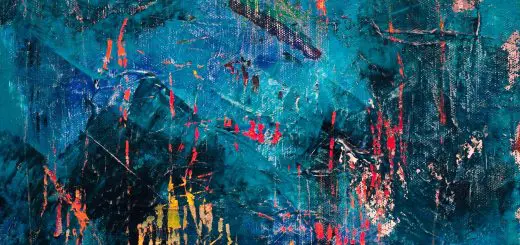Why People Visit Prisons and Dark History Sites

Looking for more amazing products? Check out our online store and explore our collection here! Happy shopping!
Before diving in, please note: This post is for informational purposes only. If you’d like to know more about how we approach topics, feel free to check out our friendly Disclaimer Page.
Hey there, amazing readers! 
We’re committed to delivering quality posts, and your support (even just sticking around despite the ads) means everything to us. So, bear with us, and thanks for helping us keep the good vibes rolling. Now, on to the fun stuff!
TRANSLATE BUTTON AT THE END OF THE ARTICLE
A Quick Overview
Have you ever found yourself drawn to the darker sides of history?
If so, you’re not alone.
Many people find a curious fascination with prisons and dark history sites.
Whether it’s the haunting stories of those who lived there or the lessons learned from past mistakes, these locales offer a unique glimpse into the human experience.
In this article, we’ll explore the reasons behind our attraction to these sites.
From educational benefits to the thrill of the unknown, we’ll dive into what makes dark tourism so compelling.
Exploring the Curiosity Behind Dark History Sites
Curiosity is a powerful motivator.
When it comes to dark history sites, this curiosity often hinges on our desire to understand the complexities of human behavior.
Why did people commit crimes?
What led to societal upheaval?
Visiting these sites allows us to step back in time and confront the darker aspects of our shared history.
Take, for example, the infamous Salem Witch Trials.
A visit to Salem, Massachusetts, invites exploration into a period defined by paranoia and injustice.
Standing in locations where hysteria unfolded, I felt a palpable sense of both dread and intrigue.
This blend of emotions is common among visitors.
We want to better understand what drove communities to such extremes.
Moreover, our fascination with dark history often reflects our own fears and moral quandaries.
A visit to sites like Hiroshima provides an opportunity to contemplate the consequences of war and the resilience of humanity.
Such reflections can lead to profound insights about our current world.
People also tend to romanticize past eras, viewing them through the lens of movies or literature.
This can create a sense of disconnect between our lives today and the harsh realities faced by those in history.
Visiting dark sites re-establishes that connection, bringing the past to life in vivid detail.
In addition, dark history sites often serve as cautionary tales.
By examining the mistakes of the past, we can better navigate our present and future.
This drive to learn from history motivates many to seek out these experiences.
Prisons: A Unique Window into Human Stories
Prisons are often viewed as grim places, yet they offer a wealth of human stories.
Each facility has its own history, filled with tales of redemption and remorse.
When I visited Alcatraz, I was struck by the stories of notorious criminals like Al Capone and the infamous escape attempts.
These narratives create a sense of connection with individuals who, despite their choices, led lives filled with complexity.
The architecture of prisons also tells a story.
Discover "The Traveler’s Guide: Your Ultimate Companion for Every Adventure
"
Many facilities are designed with a specific purpose in mind, reflecting the values and fears of society at the time.
For instance, the imposing walls of Eastern State Penitentiary in Pennsylvania highlight the era’s focus on reform through isolation.
Standing within those walls, I felt the weight of history pressing down, reminding me of the transformative power of confinement.
Prisons also serve as a mirror, reflecting societal issues such as crime, punishment, and rehabilitation.
They force us to confront uncomfortable questions: What drives someone to crime?
How do we define justice?
Engaging with these themes leads to a deeper understanding of ourselves and the world around us.
Visiting prisons often provides an opportunity to hear from former inmates or guides who share their personal stories.
I remember a guide at a former prison who had spent years behind bars.
His insight opened my eyes to the realities of life inside and the challenges faced upon release.
These personal connections add depth to our understanding of incarceration.
Additionally, many prisons have been transformed into museums, allowing for an educational experience that blends history with contemporary issues.
This shift helps us see prisons not just as places of punishment but as pivotal sites for social change.
The Thrill of the Unknown: Why We Are Drawn to Dark Places
There’s an undeniable thrill in exploring the unknown.
Dark history sites evoke a sense of mystery that many of us find irresistible.
We are often attracted to the stories that linger in shadows, waiting to be discovered.
That sensation of stepping into the unknown can be exhilarating.
When I walked through the ruins of an abandoned asylum, each creak of the floorboards sent shivers down my spine.
Yet, that fear was coupled with excitement.
What secrets might this place hold?
Fear can act as a catalyst for curiosity.
The adrenaline rush we experience in unsettling environments keeps us engaged.
It’s like watching a suspenseful movie—our hearts race as we become deeply invested in the story unfolding before us.
Dark places also challenge our perceptions of safety and comfort.
By confronting fear head-on, we gain a sense of empowerment.
Visiting sites like Auschwitz or Chernobyl forces us to reconcile our feelings of discomfort with the realities faced by countless individuals.
This confrontation can be transformative.
Another layer to this thrill is the sense of camaraderie it brings.
Exploring dark sites with friends can forge deeper bonds as we share our reactions and reflections.
Together, we process the weight of history and the emotions it evokes.
Lastly, dark history sites often feature stories that are compellingly human.
When I learned about the lives of those who suffered due to societal failures, I felt a connection.
It’s this mix of fear, curiosity, and shared humanity that draws us back time and again.
Learning from the Past: Educational Benefits of Visits
The educational value of visiting prisons and dark history sites cannot be overstated.
History books often present narratives that seem distant and abstract.
In contrast, experiencing these places firsthand creates a tangible connection to our past.
When I walked through the halls of the Anne Frank House in Amsterdam, I could almost hear the whispers of Anne and her family.
It was as if history leaped off the pages and into my heart.
This kind of immersive learning deepens our understanding of historical events.
Many sites offer workshops, lectures, or guided tours that provide context and insights.
These opportunities encourage visitors to engage actively with the material.
For instance, participating in a guided tour at the National Civil Rights Museum allowed me to ask questions and discuss the implications of civil rights struggles today.
Additionally, the emotional weight of these experiences contributes to retention.
We’re more likely to remember what we felt and learned during our visit than something we read in a textbook.
Moreover, these sites often highlight the importance of social justice and human rights.
Learning about injustices faced by others can inspire us to become advocates for change in our own communities.
This sense of responsibility is a powerful takeaway from dark tourism.
As we gather knowledge from these experiences, we also develop empathy.
Understanding the circumstances that led to historical events fosters a sense of compassion for those who lived through them.
This empathy can drive us to take action and make a difference.
Uncovering Stories: The Role of Museums in History
Museums dedicated to dark history provide crucial spaces for education and reflection.
They serve as repositories of stories that might otherwise be forgotten.
The curators behind these institutions work tirelessly to ensure history is presented accurately and thoughtfully.
During my visit to the Museum of Death in Los Angeles, I was captivated by the diverse exhibits.
Each display told a different story, from historical events to cultural practices surrounding death.
This variety kept me engaged and eager to learn more.
Museums also play a vital role in preserving artifacts from the past.
These objects create a physical connection to history.
For example, seeing items belonging to prisoners can ignite a deeper understanding of their struggles and triumphs.
Holding a piece of history in my hands often left me in awe.
The narratives presented in museums often challenge prevailing narratives.
They encourage us to question what we know and consider alternative viewpoints.
This critical thinking is essential for personal growth and societal progress.
Furthermore, many museums host community events and educational programs.
These initiatives foster dialogue around difficult topics, creating a safe space for conversation.
Engaging in discussions about dark history can bring communities closer together.
Museums also contribute to tourism, generating funds that enable them to continue their work.
This support helps maintain and expand their educational efforts.
It’s a win-win for both visitors and the institutions.
The Allure of the Macabre: Fascination with Prisons
Prisons hold a particular allure that captivates many.
They encapsulate tales of crime, punishment, and, sometimes, redemption.
This fascination can be traced back to our innate desire to understand the darker aspects of human nature.
When I visited the infamous San Quentin State Prison, a sense of dread hung in the air.
Yet, this feeling was paired with curiosity.
What drove these individuals to commit such acts?
What were their lives like before incarceration?
Media plays a significant role in shaping our perceptions of prisons.
Movies, documentaries, and true crime podcasts often romanticize the prison experience, drawing viewers in.
This can create an almost voyeuristic interest in the lives of those behind bars.
Moreover, prisons often serve as a backdrop for stories of resilience.
Many inmates emerge from their experiences transformed, seeking redemption and a second chance.
These narratives can inspire us, reminding us of the human capacity for change.
The complexity of prison life also intrigues visitors.
From the dynamics between inmates to the challenges of rehabilitation, there’s much to unpack.
Engaging with these themes can provoke thought about our justice system and its effectiveness.
Additionally, visiting prisons allows us to confront our fears around crime and punishment.
By examining these topics in a safe environment, we can better understand our own beliefs and biases.
Ultimately, prisons reflect the darker sides of humanity while also holding stories of survival and hope.
This duality is what continues to draw visitors.
Engaging with History: Experiencing Sites Firsthand
There’s something undeniably powerful about experiencing history firsthand.
When we walk the same grounds as those who lived through significant events, we form a connection that goes beyond mere words.
During my exploration of the former concentration camp at Dachau, the gravity of the situation sank in.
I could feel the history around me, heavy and poignant.
Such experiences cannot be replicated through books alone.
Hands-on activities, such as reenactments or living history presentations, bring history to life.
These interactions allow us to participate actively in the narrative rather than passively consuming information.
Moreover, engaging with history encourages us to ask questions.
Why did events unfold this way?
What could have been done differently?
This inquiry leads to deeper learning and a greater understanding of the complexities of history.
Visiting historical sites also creates opportunities for reflection.
It allows us to process our feelings and thoughts on what we have learned.
I often find myself contemplating the broader implications of my experiences long after leaving a site.
Additionally, engaging with history fosters a sense of responsibility.
When we confront the past, we recognize our role in shaping the future.
This awareness can motivate us to advocate for positive change in our communities.
Ultimately, experiencing history firsthand allows us to appreciate the sacrifices and struggles of those who came before us.
It’s a reminder that history is not just a collection of dates and events but a tapestry woven from countless lives.
Connecting with Emotions: The Power of Dark Tourism
Dark tourism has a unique ability to evoke powerful emotions.
From sadness and anger to empathy and hope, these sites stir feelings that resonate deeply within us.
When I stood in front of the iconic gates of Auschwitz, the sorrow of countless lives lost washed over me.
Such moments force us to confront uncomfortable truths about humanity.
It’s an emotional rollercoaster, but one that can lead to meaningful reflection.
Experiencing these emotions often leads to a greater appreciation for life.
When we witness the horrors of the past, we become more aware of our privileges and the importance of building a better future.
This awareness can inspire acts of kindness and social responsibility.
Moreover, dark tourism encourages us to engage with our own feelings.
It’s okay to feel discomfort or sadness when visiting these sites.
Acknowledging these emotions can facilitate healing and personal growth.
Sharing our experiences with others also allows us to process emotions collectively.
Talking about our feelings and reactions can bring us closer to those we share the journey with.
It transforms dark tourism into a communal experience.
Many visitors leave dark history sites with a renewed sense of purpose.
They feel compelled to educate others about what they learned or to take action against injustice.
This ripple effect showcases the transformative power of dark tourism.
Ultimately, the emotions stirred by dark tourism serve as a catalyst for change.
They remind us of our shared humanity and the importance of learning from the past.
Community and Togetherness: Visiting as a Group Activity
Visiting prisons and dark history sites can be a deeply communal experience.
It brings people together, fostering connections over shared emotions and reflections.
When I visited a former prison with friends, we spent hours discussing our thoughts and feelings.
The experience sparked conversations about our own beliefs around justice and rehabilitation.
It strengthened our bond as we navigated complex themes together.
Group visits also provide a support system for processing the heavy topics encountered at these sites.
Sharing reactions is essential for understanding and reflecting on our experiences.
It’s comforting to know others are on the same journey.
Moreover, community visits often include guided tours, which enrich the experience.
Having a knowledgeable guide can spark discussions and foster engagement with the material.
Participating in group tours allows us to learn from one another.
Different perspectives can lead to lively debates, adding depth to our understanding.
It’s fascinating to hear how others interpret and react to the same history.
Additionally, visiting as a group can create lasting memories.
The shared experience of exploring dark history solidifies friendships and creates bonds that extend beyond the visit itself.
Ultimately, community involvement in dark tourism reinforces the idea that we are not alone in confronting our past.
It allows us to support and uplift one another as we engage with challenging topics.
The Role of Guided Tours in Enhancing Experiences
Guided tours play a pivotal role in enriching our experience at prisons and dark history sites.
Knowledgeable guides share their insights, weaving together narratives that bring history to life.
When I participated in a guided tour of the Hiroshima Peace Memorial, the guide’s passion was palpable.
Their storytelling transformed facts and figures into relatable, human experiences.
Suddenly, the past felt immediate and relevant.
Guides often encourage questions, fostering an interactive atmosphere.
This engagement allows us to delve deeper into the material and confront our own beliefs.
I left with new insights that I hadn’t considered before.
Moreover, guided tours often highlight lesser-known stories, revealing the complexities of history.
These narratives can challenge our preconceived notions and broaden our understanding.
Guides can also provide context for difficult topics, helping us navigate our emotional responses.
This support is crucial for processing the weight of dark history.
In addition, group tours facilitate connections with fellow participants.
Shared experiences and discussions enhance our understanding and create a sense of camaraderie.
Ultimately, guided tours serve as a bridge to the past, allowing us to engage with history in meaningful ways.
They deepen our connection to the narratives of those who came before us.
From Fear to Fascination: Changing Perceptions of Prisons
Our perceptions of prisons are evolving.
Once seen solely as places of punishment, they are increasingly viewed as complex systems that reflect societal issues.
This shift opens up a new avenue for exploration.
When I first thought of prisons, I imagined cold, austere buildings designed for confinement.
However, after visiting several facilities, including the Old Jail Museum in St.
Augustine, I realized there’s so much more to the story.
The history of each prison reveals layers of human experiences—both tragic and transformative.
This change in perspective encourages us to consider the impact of incarceration on individuals and communities.
It raises important questions about justice, rehabilitation, and societal responsibility.
Moreover, many prisons are now working to provide educational programs and rehabilitation opportunities.
This shift reflects a growing recognition that confinement doesn’t have to be synonymous with hopelessness.
I’ve met individuals who advocate for change within the prison system, transforming their experiences into opportunities for growth and healing.
These inspiring narratives contribute to a more nuanced understanding of incarceration.
Furthermore, discussing prison experiences openly can lead to advocacy and reform.
As our perceptions shift, we can push for policies that prioritize rehabilitation over punishment.
Ultimately, the journey from fear to fascination allows us to engage compassionately with the complexities of the prison system.
It challenges us to rethink our beliefs and push for a more just society.
Celebrating Resilience: Finding Hope in Dark Histories
While dark histories can be heavy, they often carry messages of resilience and hope.
Many visitors leave these sites with a sense of inspiration, driven by the triumphs of those who overcame adversity.
Reflecting on the stories of individuals who persevered in the face of unimaginable struggles can be incredibly uplifting.
For example, learning about those who fought for civil rights despite fierce opposition motivates us to advocate for justice today.
When I visited the Civil Rights Institute in Birmingham, Alabama, I felt a wave of determination wash over me.
Reading about the activists who risked their lives for equality sparked a fire within me.
Their resilience became a source of hope.
Many dark history sites focus on the strength of the human spirit.
They highlight stories of survival—individuals who turned their pain into purpose.
These narratives remind us that even in the darkest times, there is room for light.
By celebrating resilience, we honor those who faced hardship.
This acknowledgment reinforces the idea that we can learn from the past and apply those lessons to our own lives.
Moreover, embracing hope encourages us to take action.
Whether we become advocates for change or simply strive to be kinder, we can make a difference in our communities.
Ultimately, finding hope in dark histories transforms our understanding of the past.
It reminds us that even in despair, there is potential for growth and healing.
Conclusion
Visiting prisons and dark history sites offers a unique and transformative experience.
It allows us to confront our fears, learn from the past, and connect with the stories of those who came before us.
Whether through guided tours, group experiences, or personal reflections, these visits encourage empathy and understanding.
In exploring the complexities of humanity, we gain valuable insights that can shape our actions today.
Each encounter with dark history serves as a reminder that our stories are intertwined, and that confronting the past is an essential step towards a brighter future.
So, the next time you feel the pull of a dark history site, embrace it.
You might just find that there’s more hope than horror waiting for you.

The Enlightenment Journey is a remarkable collection of writings authored by a distinguished group of experts in the fields of spirituality, new age, and esoteric knowledge.
This anthology features a diverse assembly of well-experienced authors who bring their profound insights and credible perspectives to the forefront.
Each contributor possesses a wealth of knowledge and wisdom, making them authorities in their respective domains.
Together, they offer readers a transformative journey into the realms of spiritual growth, self-discovery, and esoteric enlightenment.
The Enlightenment Journey is a testament to the collective expertise of these luminaries, providing readers with a rich tapestry of ideas and information to illuminate their spiritual path.
Our Diverse Expertise
While our primary focus is on spirituality and esotericism, we are equally passionate about exploring a wide range of other topics and niches 

To ensure we provide the most accurate and valuable insights, we collaborate with trusted experts in their respective domains 
Our blog originally focused on spirituality and metaphysics, but we’ve since expanded to cover a wide range of niches. Don’t worry—we continue to publish a lot of articles on spirituality! Frequently visit our blog to explore our diverse content and stay tuned for more insightful reads.
Hey there, amazing reader! 
Check out our store here and take a peek at some of our featured products below! Thanks for being awesome!











